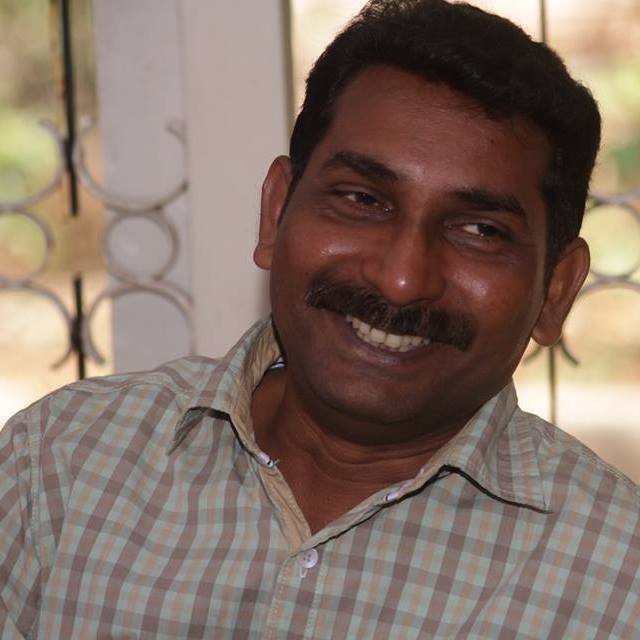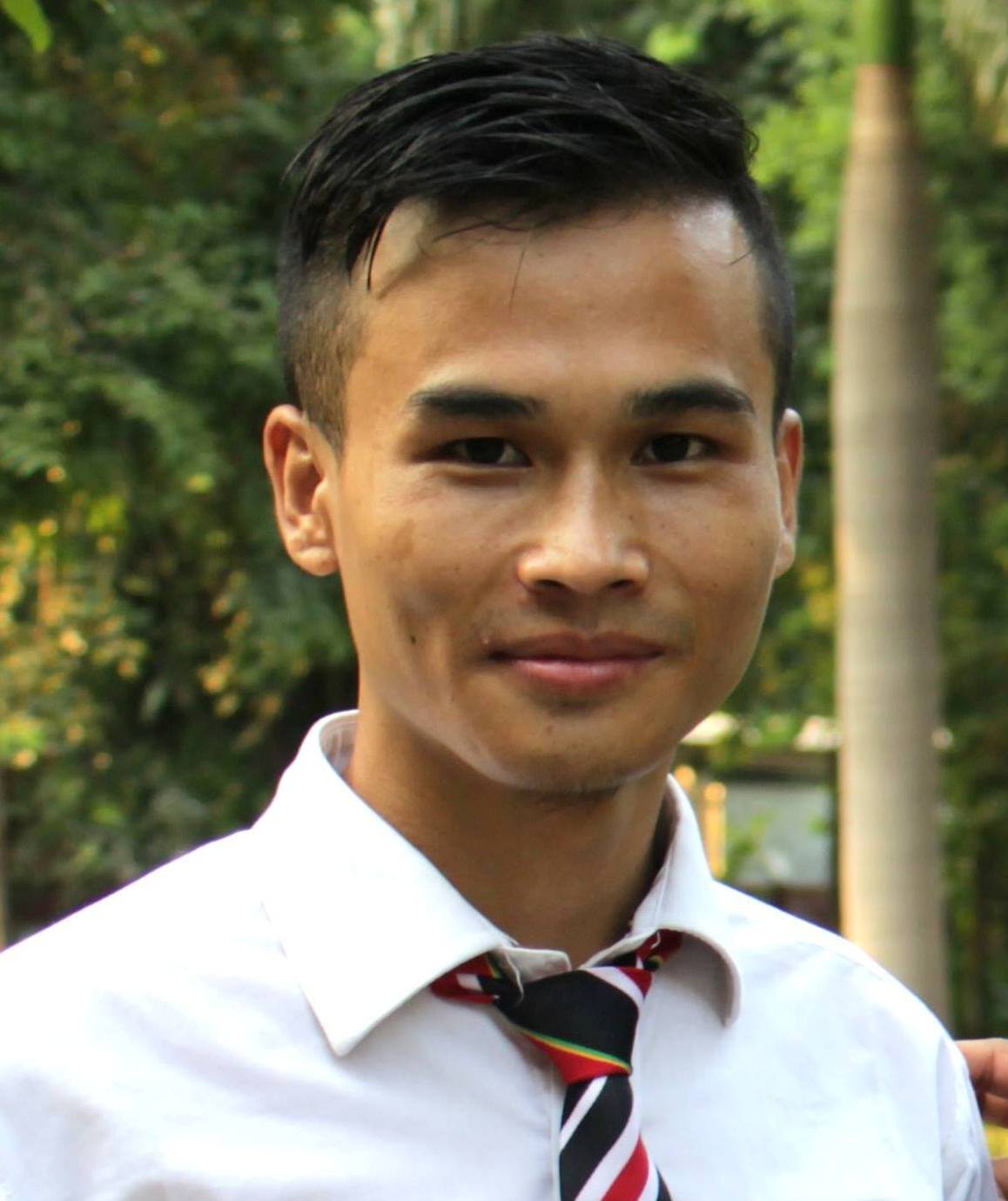Umar Nizar
 The Bhakti movement of Ramanuja, Nimbarka, Madhava, Ramananda, Vallabhacharya, Chaitanya, Nam Dev, Kabir, and Guru Nanak had very little impact on Kerala…. The problem of reconciliation between Hinduism and Islam also did not arise seriously in Kerala in that period. Contact with outside ceased to exist in the age of Chola imperialistic wars. A line of saints, between 13th c. and 17th c. propagated Krishna Cult. Whether it can be characterised as a Bhakti movement is doubtful. It had no political and social background. Most of these saints were devotees of Srikrishna of Guruvayur. The earliest of them were Bilvamangalam alias Krsna Lilasuka (1251-1350 CE). (Nambudiri, 160)
The Bhakti movement of Ramanuja, Nimbarka, Madhava, Ramananda, Vallabhacharya, Chaitanya, Nam Dev, Kabir, and Guru Nanak had very little impact on Kerala…. The problem of reconciliation between Hinduism and Islam also did not arise seriously in Kerala in that period. Contact with outside ceased to exist in the age of Chola imperialistic wars. A line of saints, between 13th c. and 17th c. propagated Krishna Cult. Whether it can be characterised as a Bhakti movement is doubtful. It had no political and social background. Most of these saints were devotees of Srikrishna of Guruvayur. The earliest of them were Bilvamangalam alias Krsna Lilasuka (1251-1350 CE). (Nambudiri, 160)
Poets, singers, and saints from Kerala are conspicuous by their absence from the pantheon of pan-Indian Bhakti. This has more to do with exigencies of national integration than with reality. The 16th-century poet from Malabar, Poonthanam Namboodiri is the poet who is often anthologized as part of Indian poetry, due to the distinctly recognizable hallmark of his Bhakti. Ezhuthachan, the preceptor of Malayalam literature and Cherusseri, a poet of immense lyrical and erotic felicity are often given the short shrift. This paper focuses on these three poets.
According to PP Narayanan Nambudiri, there was no Bhakti Movement (similar to Northern India) worth speaking of in Kerala and it was rather a Bhakti cult that took root and proliferated in Kerala. Bilvamangalam Swamy wrote the ‘Srikrishna Karnamrtha’ and made the concept of Vishnu as Balakrishna or Unnikrishnan (infant Krishna) a feature of the popular Krishna cult in Kerala, with the Guruvayoor Temple as its center. (Nambudiri, 157) Thus a Bhakti Cult took root in Kerala. The origin of the ‘Bhakti Cult’, Nambudiri traces back to, Mother Goddess and Siva cults of the Indus Valley. The reason for the ‘Bhakti Cult’ of Kerala not being called a ‘movement’ could also be the use of the timid-sounding ‘prasthanam’ (movement) in Malayalam literary history, instead of a more robust word like the Hindi ‘andolan’ with its connotations of social change.
Bhakti first proliferated in Kerala in the form of folk songs. Songs preceded the development of dialects. In this manner, the folk songs on Bhakti preceded the evolution of Malayalam language. Many of the early folk songs were in praise of various deities. In the ‘pattuprasthanam’ or song movement in Malayalam, songs in praise of Rama and songs in praise of Krishna were the most popular.
Kulasekhara Alvar, the 8th century Chera ruler and poet of Vaishnava bhakti, composed the ‘Mukundamala’ and ‘Perumal Tirumozhi’ which have been anthologized as part of the Vaishnavite Bhakti canon in the compendium called ‘Nalayira Divya Prabandham’ compiled by Nathamuni between 9th and 10th centuries. He is sometimes said to have been born in Kerala, yet the sources point otherwise, as Bharati Jagannathan says, ‘there is an attempt to place Kulasekhara Alvar based on the assumption that he was a crowned King of Kerala. However, our evidence does not permit this confidence as none of the above sites can be reliably placed in Kerala; they seem to be located around Madurai and Uraiyur.’ (Jagannathan, 139)
PP Narayanan Nambudiri says with reference to early Bhakti movement in Southern India that, ‘among the 62 Nayinars and 12 Alwars, Kerala produced only four, three Nayinars and one Alwar, namely Cheraman Perumal Nayinar, Viralminta Nayinar, Arivatta Nayinar, and Kulasekhara Alwar. People worshipped both in Siva and Vishnu temples. Division of brahmins into Saiva and Vaishnava was practically unheard of in Kerala.’ (Nambudiri, 159)
The 12th century poet Cheeraman who wrote the ‘Ramacharitam’ is among the earliest to attempt literary composition in Malayalam, though it was heavily influenced by Tamil, and also by Sanskrit. Cheeraman is surmised by many to have been a king of the Venad ruling family, and by yet others to have been a commoner from a deprived background. In his work ‘Ramacharitam’, the poet tries to create dharmic awareness through Rama, an incarnation of Vishnu. A segment of Ramayana has been interpreted by Cheeraman supposedly ‘to enlighten those little folks on earth’ by the poet Cheeraman.‘To enlighten those little folks on earth,’ is perhaps Cheeraman’s most popular line and has come to serve as a motto for later writers in Malayalam.
Ramacharitham: The First Blooming
‘Ramacharitam’ was written in the ‘pattu’ or song format. In fact, the first among the works in the ‘Pattu movement’ in Malayalam was Ramacharitham by Cheeraman. It is often considered the very first work of Malayalam Bhakti movement, which was preceded by the ‘Pattu’ Movement or the ‘pattuprasthana’. It was written in the 12th century, probably in northern Kerala and was based on Valmiki Ramayana and also the ‘Kamba Ramayana’. It only deals with the Yudha Kanda.
The ‘Ramacharitam’ has 164 segments of 1814 stanzas composed in the ‘pattu’ format. Though the major focus of the poem is on the valorous ‘Yudha Kanda’ of the Ramayana, Bhakti has also been given importance. Though the intention of the poet is not the propagation of Bhakti, it is beyond doubt that the poet has been influenced by Bhakti. This is a work that also illuminates the veera rasa. Alongside, the poet illustrates various dimensions of Bhakti. Cheeraman’s ‘Ramacharitam’ is an instance of the medieval model of Vaishnavite Bhakti being replicated all over India. Diverging from the source, in the coronation segment, a lengthy panegyric of Vishnu by the sage Narada has been added. The ‘Adityahridaya’ segment of ‘Ramacharitham’ is lengthier than in the original. Rama is an incarnation of Vishnu according to this work. Also can be found in this work is the lamentation of Ravana’s sister Mandodari on his death and also her praise of the incarnation that is Rama.
Many instances in the poem vouch that the poet was a devotee of Vishnu. Many lines in the poem signify the Vaishnavite predilections of the poet. In the matters of Bhakti, Cheeraman was a precursor to Ezhuthachan. For positing Rama as an incarnation of Vishnu, the poet depended on the Kamba Ramayana. Even while stressing on Veera rasa, the poet also tries to boost Bhakti. ‘O lotus-eyed God,/reposing on the breasts of the flower-born Lakshmi/lovely in her luxuriant flower-decked hair/thous, the essence of serene wisdom,/rarest to be revealed.’ (Cheeraman, 125). The eyes of the Lord Vishnu reposing with his spouse Lakshmi are described anamorphically in the Lacanian sense. According to Žižek, there is an awry gaze that reveals different perspective which doesn’t coincide with the empty serene gaze. The infinitesimal torsion between these two gazes, separates us from psychosis. (Žižek, Looking Awry) The serenity derives from the gaze. He rests on Lakshmi, his spouse’s bosom. There are two kinds of mothers in Indian mythology, according to AK Ramanujan-the tooth mother and the breast mother. The sustainer of the worlds Lord Vishnu, rests on the breasts of his consort goddess Lakshmi.
The breasts are organs of fragility as well as subtlety. Like the male gonads, they occur in pairs and also produce life-sustaining fluid. ‘When Abhirami Bhattar gives us the striking image of the Devi’s breasts searing Shiva’s chest…we are reminded in one stroke that fragility is not without power, subtlety is not without strength.’ (Subramaniam, xxiv) (It has to be noted that it is the gaze that is gendered here and not the body as such).
The ‘Ramacharitam’ of Cheeraman is the first instance of an intense outpouring of literary devotionalism in Malayalam. The language used by Cheeraman is closer to Tamil. He also self-consciously includes a reference to the Tamil Vaishnava poet Nammalvar. ‘May I be blessed with the gift of genius/by Valmiki, the first of poets,/then Vyasa, the good Agastya, scholar in the Vedas,/and the sage who composed honey-sweet verses in Tamil.’ (Subramaniam, xxiv) The sage who composed the mellifluous lines is supposed to have been none other than Nammalvar himself. There existed a loosely held sense of a networked sociality of Bhakti that encompassed multiple voices and beings. A pan-Indian fraternity was being forged to form a ‘commonwealth of love’. (See Hawley, A Storm of Songs)
The book starts with verses praising Vishnu along with Ganapathi, Saraswathi, Siva, Parvathy, Lakshmi. The poet prays to Parameswara to grand him the boon to praise Mahavishnu who incarnated as Rama and defeated Ravana. There is a panegyric that is intense with Bhakti, during the instance where Vibhishana compels Rama to give Sita to Ravana.
Malayalam literary history is replete with ‘movements’ from the ‘pattu’ (song) movement to the bhakti movement. But John Hawley would argue that medieval bhakti was a network rather than a movement (though he might be mistaking the term ‘andolan’ for the English equivalent of ‘movement’). (Hawley, A Storm of Songs, 20)
It is interesting to note that the character of Ravana is given some importance in ‘Ramacharitam’ which essentially is the ‘history of Rama’. The bewailing Mandodari and other women of Ravana’s harem and Lanka are sympathetically presented, thus giving Ravana the aura of being a ‘prajavatsala’ (beloved by subjects) ruler.
The ten heads appeared as peaks of Mount Meru,
Some of the women caressed one face on their laps,
Some others another face;
They bathed the heroic faces in a flood of tears.
Some fell across and fondled the faces again and again,
Embraced the body bewailing
And went on recounting one by one
His heroic deeds of yesteryears.
They stroked their bedecked breasts and faces,
Fell around him, their melting hearts ablaze,
Started recalling amidst wailing
How he conquered the fourteen worlds,
How in fierce fight the blood of enemy warriors
Adorned the victorious hero’s bosom.
O Lord of Lanka! You shattered enemies as the sun the darkness
You were the source of strength for all;
You were the tree of paradise to solicitous
Who is here to protect us and this orphaned land?
Why did you leave us in desolation?
How could you desert this grand city
And choose the city of the god of death?
Cursed to see your shattered body thus,
Not for a moment more do we wish to breathe on this earth.
Your wealth, palace, wives, worthy sons and army
All destroyed; retribution indeed;
The sages were so distressed.
“Renowned leader of the Rakshasas! Is it that
You marched off with your army to fight the god of death
Leaving your body here?” thus lamented
The disconsolate ladies. Then came Madodari,
The exquisite beauty, and fell on his chest.
On that body, the embodiment of supreme masculine charm,
Deranged from grief, she fell;
Tears rolling down, screaming, she rolled on the dust,
Embraced his body and wailed,
Thought of her past life with him and wept.
Where have you gone O dauntless one, leaving here your body shattered
Leaving your loved ones, wealth, city, palace and friends,
Leaving all of us in the never-ending misery caused by war,
Where have you gone, O enemy of the gods? (Cheeraman, 128-130).
There are no forces of light and darkness engaged in combat here. There are no twin perspectives. There is only the one perspective and what eludes it, separated from itself by the parallax gap. The crux of ‘Ramacharitam’ is that the divine aura of Vishnu, the prime deity of Bhakti, encompasses all its protagonists and not just the Vishnu incarnate, Lord Rama. It imbues Ravana too. There is no dichotomous antagonism between good and evil. There is no neutral third ground, the big Other, from where Ravana is castigated. This non-duality was the inception of Bhakti, its birth-pangs. (Later poets won’t be so lachrymose at Ravana’s annihilation, Mandodari’s violation, etc.) This inchoateness of literary inception, together with historical circumstances, political exigencies of being Dravidian and the stagnant literary currents of linguistic evolution must have prevented Cheeraman from forging with any degree of coherence, a distinct literary character for Kerala in the early 12th c. CE itself. That lot fell on another genius, Thunchathu Ezhuthachan. But the continuity had been set.
~~~
Umar Nizar is a Research Scholar in JNU. His poems have been published in the Ibex Press Year’s Best Selection, Vayavya, MuseIndia, Culture Cafe journal of the British Library, and also broadcast by the All India Radio.










